Did Ancient Romans Have Pets?
From loyal dogs to exotic monkeys, Romans shared their homes with creatures of every kind. Art, inscriptions, and archaeology reveal a world where animals were companions, protectors, and symbols of affection.
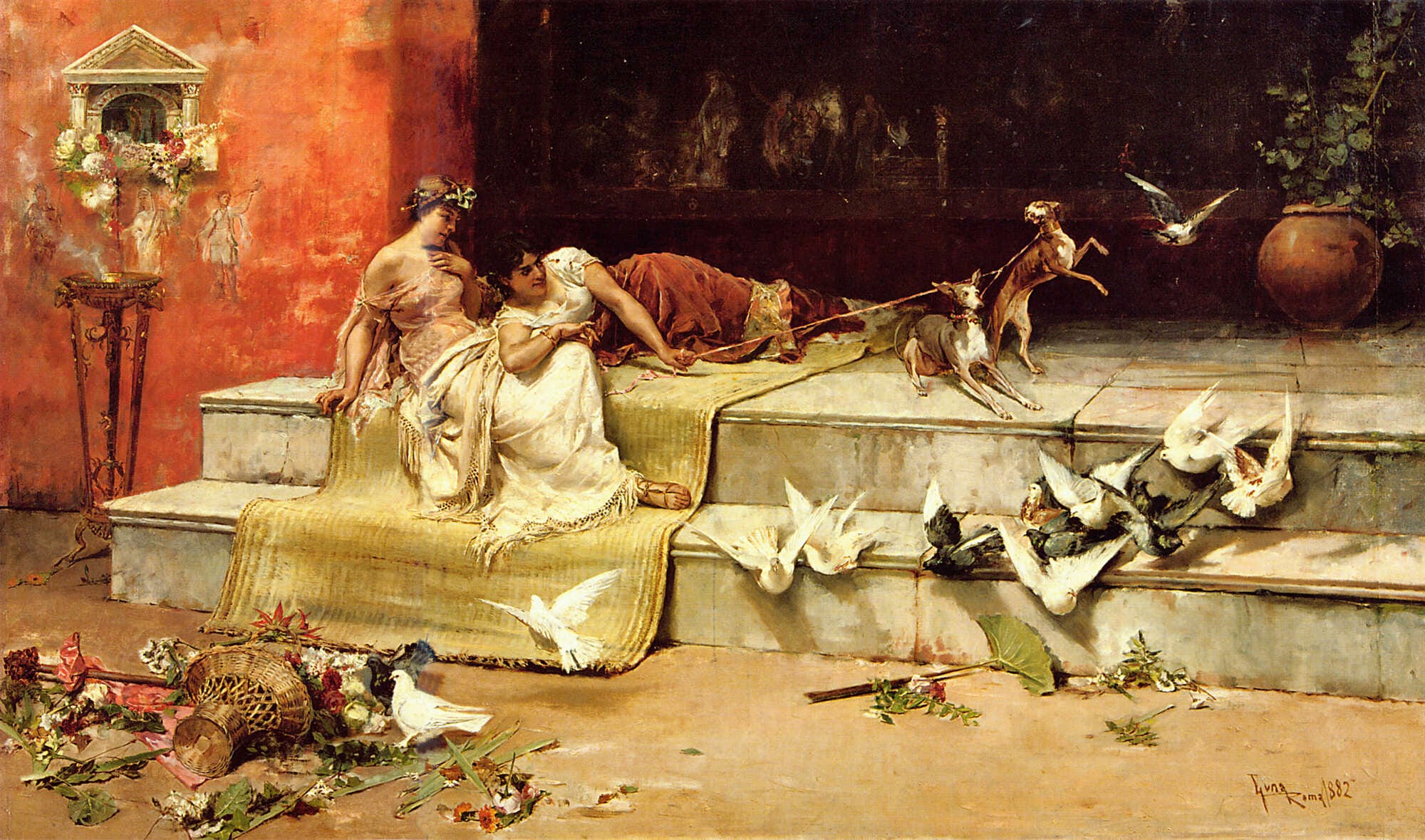
Did Ancient Romans have pets? On first glance, the question might seem modern — after all, we instinctively imagine dogs, cats, birds, or even little monkeys sitting at our feet or running through gardens. Yet archaeological finds, funerary deposits, and Roman literature all attest that the Romans, too, shared their homes with animal companions.
From loyal dogs to exotic monkeys, from runaway cats to pet birds, the evidence reveals that Romans often cared for animals with emotional attachments—not just for utility. Their pets could occupy roles as guardians, playmates, or status symbols; some were even mourned and buried with care. Exploring this intimate corner of Roman life lets us glimpse how people and animals formed bonds in antiquity, in ways both familiar and surprising.
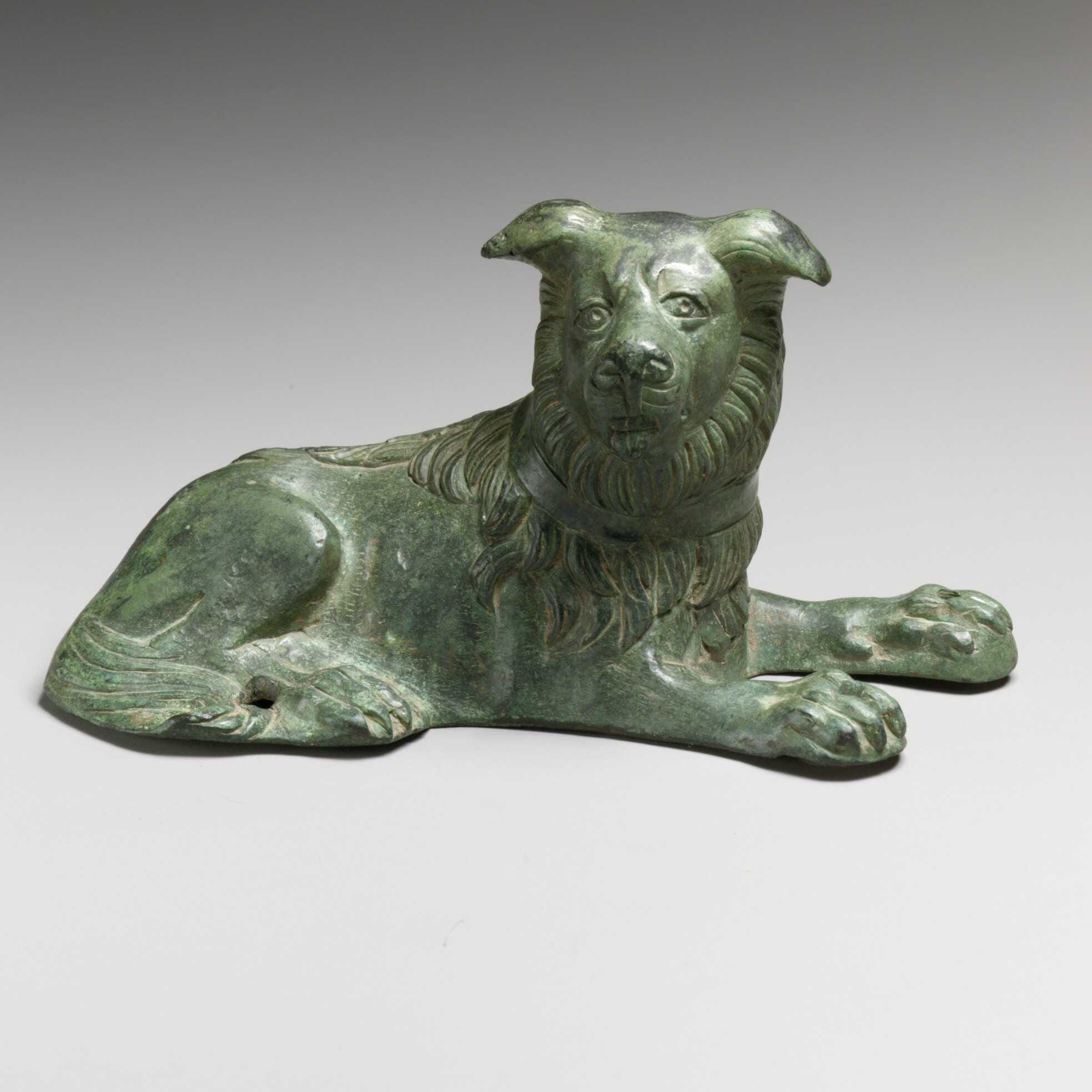
The Archaeology of Roman Pets
Archaeological and zooarchaeological studies reveal that pet-keeping in ancient Rome was not merely a literary motif but a tangible part of urban life. Inscriptions, artistic depictions, and animal remains unearthed across Italy show that dogs were present in extraordinary variety and abundance.
The Romans bred them extensively—some for work, some for companionship—and in doing so created a remarkable diversity of forms that mirrored the complexity of Roman society itself. Skeletal analysis from domestic contexts in Rome demonstrates a wide range of dog sizes, from miniature types barely twenty centimeters tall to large breeds exceeding seventy centimeters at the shoulder.
These were grouped into three rough categories:
- Small dogs under thirty-five to forty centimeters (12-18 inches)
- Medium breeds between fifty and sixty centimeters (20-24 inches)
- Large animals above sixty centimeters (24+ inches)
Medium-sized dogs predominated, typical of both rural and urban settlements. Evidence from faunal assemblages also records animals of all ages, proving that breeding occurred locally and that puppies were born and raised within Roman households.
By the imperial period, dog types had become more specialized. Toy and lap breeds were increasingly common among the elite, reflecting social status and wealth, while sturdier animals served as guards and hunters.
Meanwhile, countless mongrels and strays roamed freely through the streets, forming part of Rome’s familiar landscape. The archaeological record thus suggests a city alive with animals of every shape and purpose—creatures bred, traded, and loved across the entire social spectrum. (Pack Animals, Pets, Pests, and Other Non-Human Beings, by Michael MacKinnon, in The Cambridge Companion to Ancient Rome)
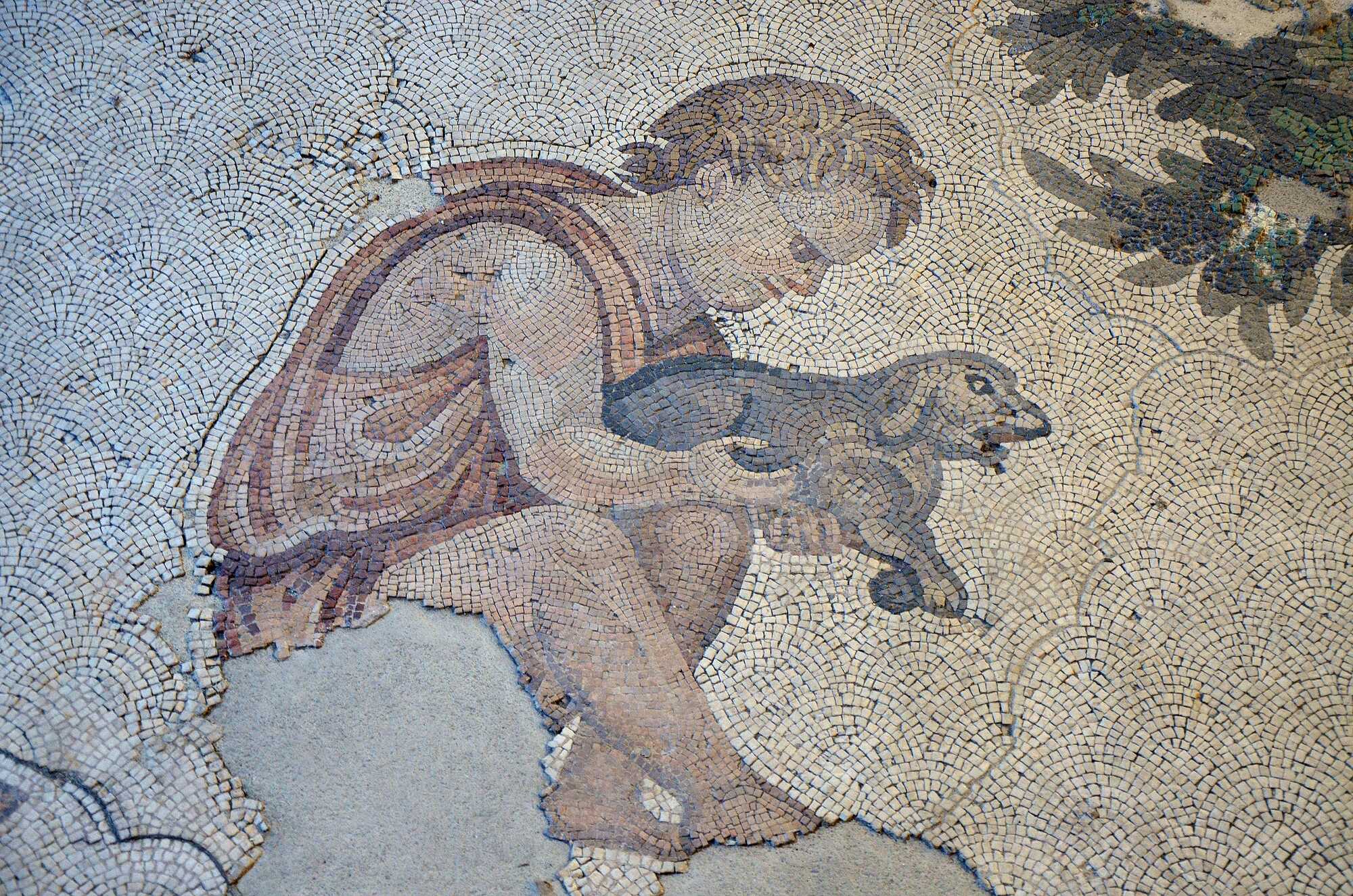
The Faithful Dog Companions of Ancient Rome
While archaeology reveals the physical presence and diversity of Rome’s dogs, ancient writers and artists captured the affection that bound these animals to their masters. The ancient Greeks and Romans expressed a profound affection for animals—perhaps more openly than the modern world does.
Their close connection with animal life was not due to greater abundance of creatures, but to the intimacy encouraged by polytheistic belief and ritual. Since religion saturated every part of daily life, animals, often sacred to particular gods and goddesses, were welcomed freely into homes. Over time, even fierce beasts were tamed and kept as companions, blurring the line between the domestic and the divine.
Among these companions, the dog held the highest place of honor. Unlike the Semitic peoples, who tended to view dogs with distaste, Greeks and Romans admired their loyalty and courage. From Homer to Plato, writers across centuries celebrated the dog’s steadfast devotion.
In Plato’s Republic, the philosopher saw in dogs the perfect blend of gentleness and bravery required of his ideal guardians. Homer’s verses had already immortalized them as faithful watch-dogs, herders, and hunters—“well-skilled in the chase.”
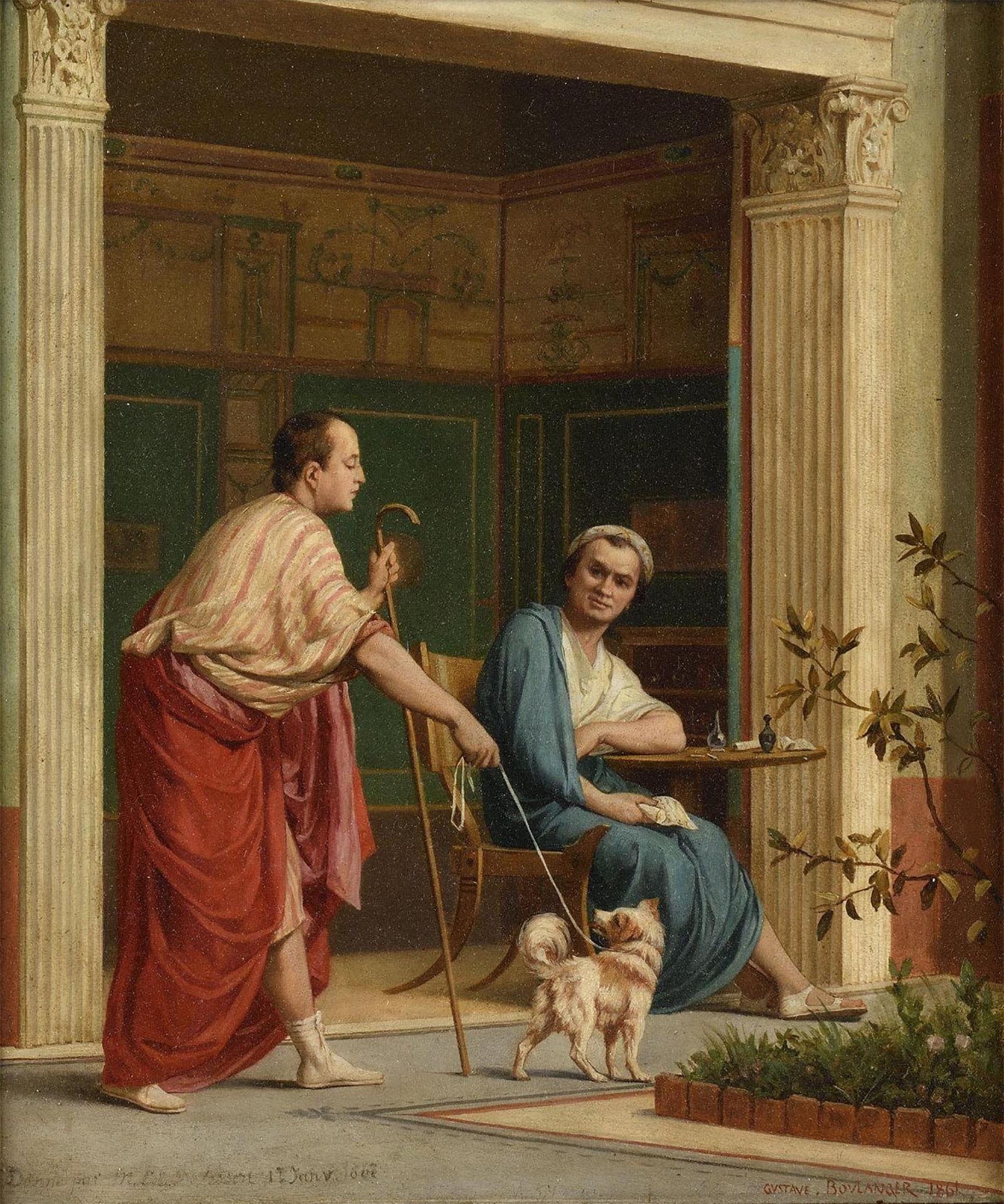
Some were pampered household pets, the trapezees kunes, dogs fed directly from their masters’ tables, often kept as companions or ornaments. Telemachus is described as striding into assembly with his two swift hounds close behind, while Argus—the only animal in the Odyssey to bear a proper name—waited faithfully for Odysseus’s return before dying upon recognizing him.
“Then, as they spoke, a dog that lay there lifted up his muzzle and pricked his ears — Argus, the hound of brave Odysseus, whom he himself had bred but never used before he sailed to Troy.
In earlier days the young men had taken him to hunt wild goats and hares and deer, but now he lay neglected, old and full of fleas.
Yet, when he sensed Odysseus standing near, he wagged his tail and dropped both ears, though he had no strength to come closer to his master.
Odysseus turned aside and brushed away a tear, hiding it quickly... And in that moment, darkness covered Argus’ eyes, for the hand that once had cared for him could care for him no more.”
Homer, Odyssey
Art and archaeology confirm this intimacy. Vase paintings from as early as the sixth century B.C. depict dogs lying beneath dining tables or following their masters to the baths and gymnasium. Hesiod, writing in Boeotia, advised farmers to feed their sharp-toothed dogs well during harvest time lest thieves steal from their barns. Such images reflect not only practicality but affection—these animals were trusted members of household life.
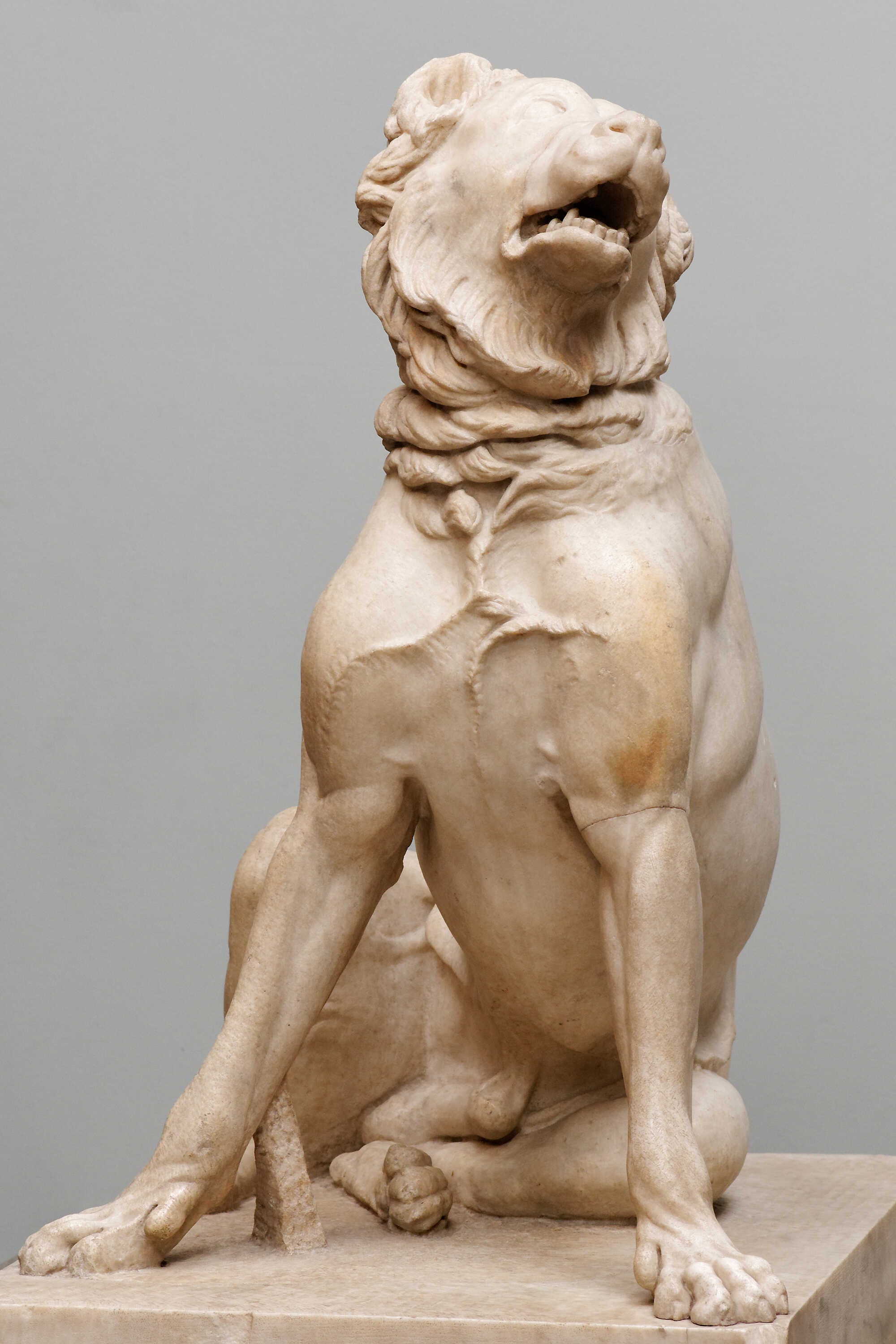
The most prized lapdog of the ancient world was the small Melitaean, imported to Malta (or possibly the Adriatic island of Meleda) from Carthaginian Africa. Admired by both men and women from Egypt to Italy, these little dogs enjoyed all the privileges of modern pets.
Theophrastus mocked the vain man who would erect a tombstone for his deceased Melitaean, and Aesop noted that travelers took puppies and monkeys to sea for amusement. Roman satire paints similar scenes: Juvenal complained that wealthy women valued their pampered catellae more than their husbands’ lives.
“She hugs to her bosom a puppy, gives it kisses on the mouth, and calls it her darling — while not once all day does she look at her husband”
Juvenal, Satires
Plutarch described a widow constantly cradling her lapdog:
“Some women, when they are widowed, keep little dogs or monkeys for company, taking them in their arms, fondling them, and always carrying them about.
Such creatures, they say, are their darlings — but the affection they lavish on these poor animals is but a sign of an empty heart.”
Plutarch, Moralia, Conjugal Precepts 142C–D
while Lucian’s philosopher Thesmopolis was burdened with escorting a rich woman’s spoiled pet, Myrrhina, on daily outings—an image any modern husband might sympathize with. Children, too, doted on their dogs, as countless vase paintings attest. The same affection continued in Roman Gaul, where dogs frequently appear in funerary reliefs.
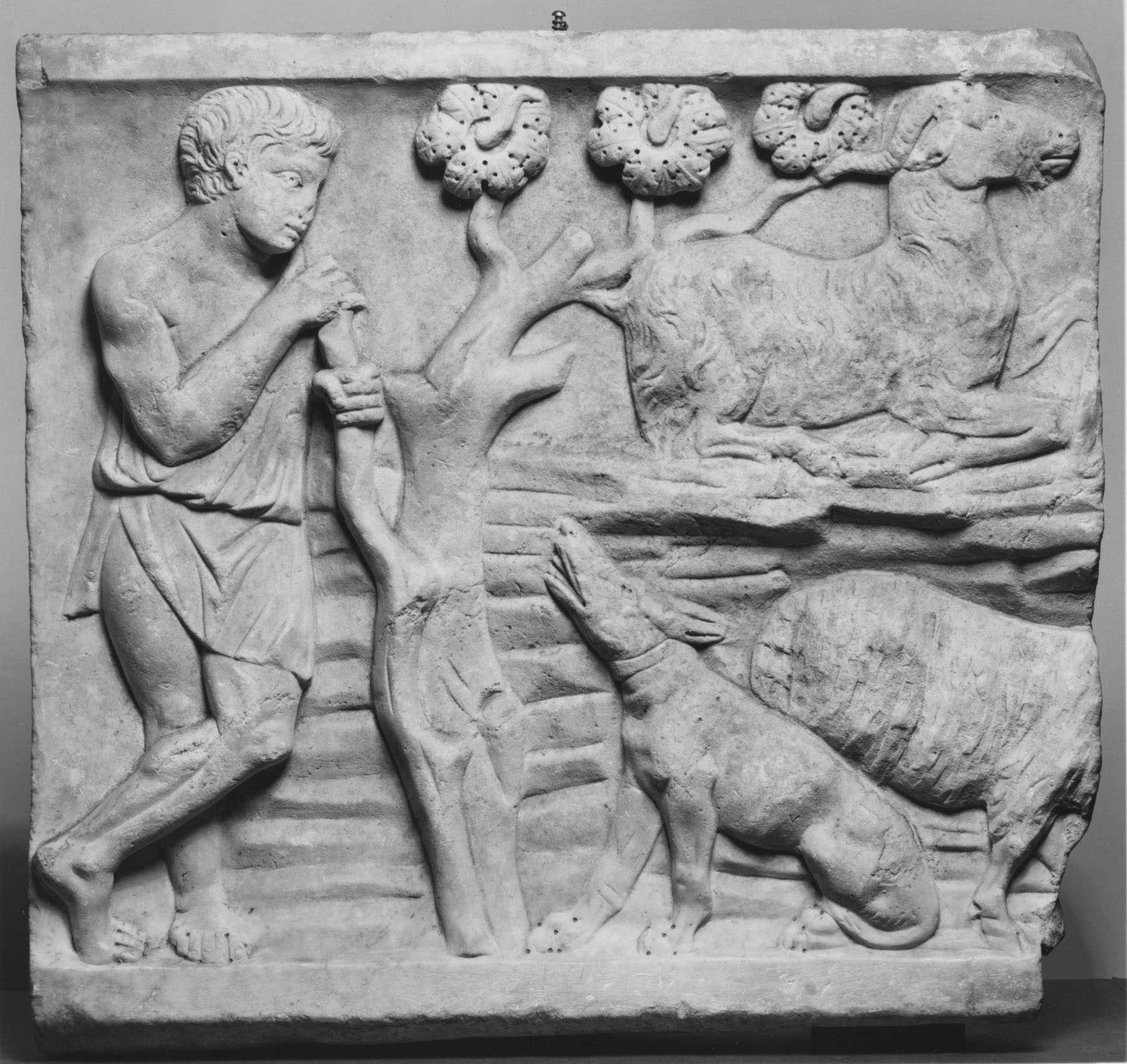
A grave discovered at Amiens in 1915 revealed the skeletons of nine dogs—one lying close to its master’s remains, two others carefully placed within urns. Even poets shared in this tenderness: Martial’s Epigrams mention a catella Gallicana, a small lapdog among his gifts, and he immortalized his beloved Issa, “dearer than Indian jewels.”
“A Gallic lapdog — I come from the Belgae. You will see no creature more often beside a lady; nor is there one more lovely.”
Martial, Epigrams
Seneca records that Emperor Claudius himself kept a white dog as his cherished companion:
“We even weep for the loss of little dogs and birds, and the Emperor Claudius himself was said to have cherished a small white dog as his companion — so much can softness of heart creep in, even amid the trappings of power.”
Seneca, De Ira
Through literature, art, and archaeology, the dog emerges as Rome’s most beloved domestic friend—guardian, companion, and reflection of fidelity itself.
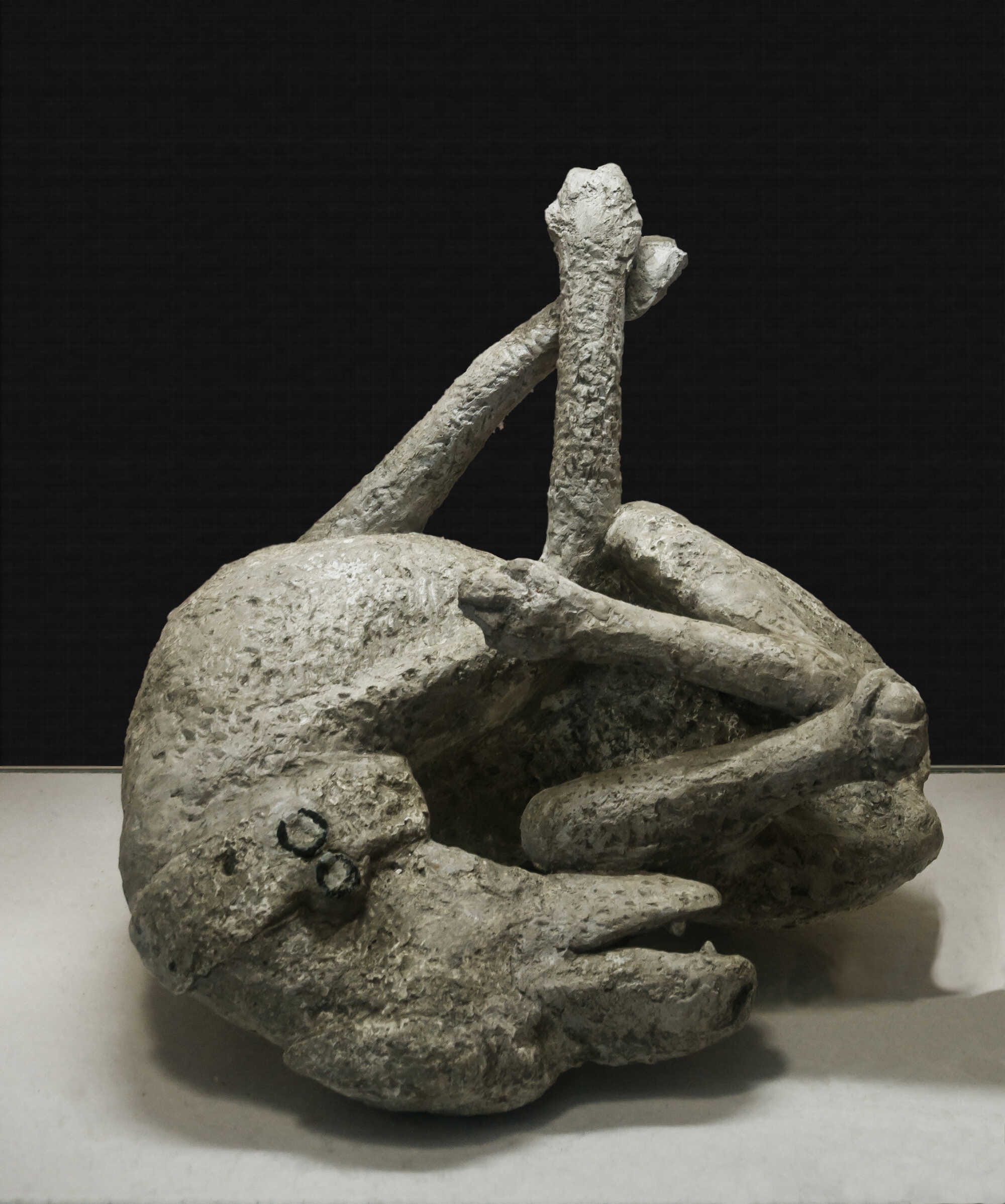
Eternal Companions
In life and in death, Romans refused to part with their beloved animals. Publius, who mourned his small dog Issa, had her likeness painted so that she might live on beyond the grave. She may have been a rich man’s pet, but affection for animals crossed class lines: one inscription honors a faithful guard dog who watched over his master’s carriage (raeda) and was praised because he “never barked foolishly.”
Many such pets were immortalized in stone. Funerary stelae from both Greek and Roman contexts portray men, women, and children with their canine companions—proof that this bond transcended wealth and status. Trimalchio, in Petronius’ Satyricon, famously ordered that his tomb depict his dog resting at his feet, beside a statue of his wife Fortunata holding a dove and leading her little catella by the belt.
A remarkable tenderness can be seen in Gallo-Roman reliefs, where everyday affection is carved into marble. One relief shows a boy reclining on a couch, allowing his dog to lick his plate clean. Another, from a child’s grave, depicts a little girl named Graccha—dead at only one year and four months—holding a basket with three puppies while their anxious mother looks up toward them.
In the museum at Beaune, a terracotta cradle preserves another touching scene: a sleeping infant tucked inside, a small dog curled at his feet. Dogs appear everywhere in ancient art, from schoolrooms to playful feasts. A hydria in the British Museum shows pets present at a music lesson, as if listening to the boys’ performance.
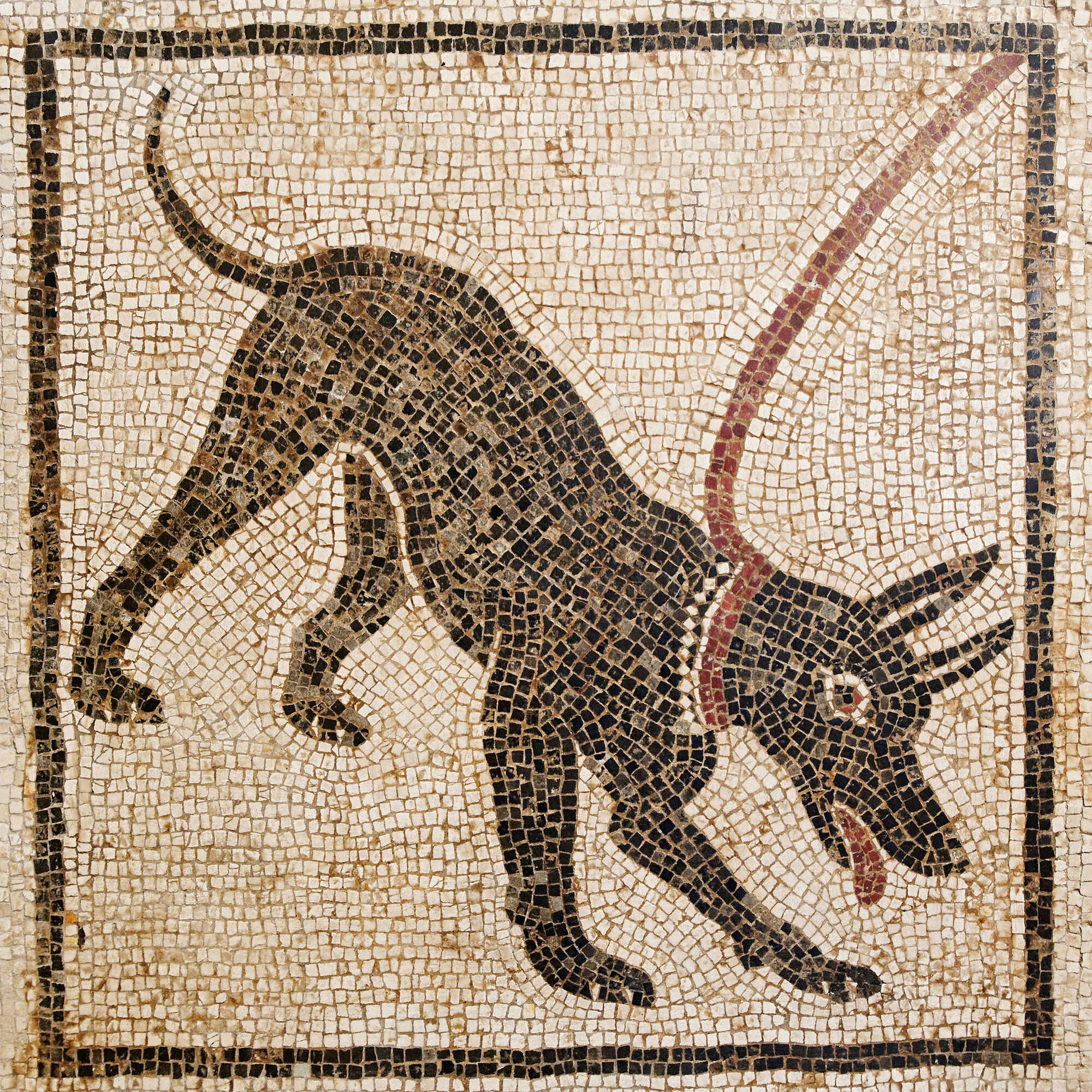
On a chous-shaped toy jug in the Metropolitan Museum of Art, children play at a mock banquet while their dog leaps up in excitement—an image that recalls Juvenal’s description of a rustic child playing with his little puppy. On another vessel, a dog climbs onto his mistress’s lap, peering curiously as she nurses her baby—a moment of domestic intimacy recognizable even today.
Sometimes these animals share the stage with the ordinary labors of Roman life. One Gallic relief portrays a dog with a collar and bell attentively watching a mule turning a grain mill—its harness fitted with surprisingly modern-looking blinders, a reminder that nihil novi sub sole, “there is nothing new under the sun.” Elsewhere, the ever-faithful Melitaean lapdog appears in mythic scenes as well: one Faliscian cup shows the little dog beside his satyr master, leaping excitedly as a goat charges forward in a playful contest.
Through sculpture, painting, and humble terracotta, Roman pets were remembered not merely as possessions but as family. Their images—curled at the feet of children, wives, and masters—capture the warmth of a world where affection for animals was carved into eternity.
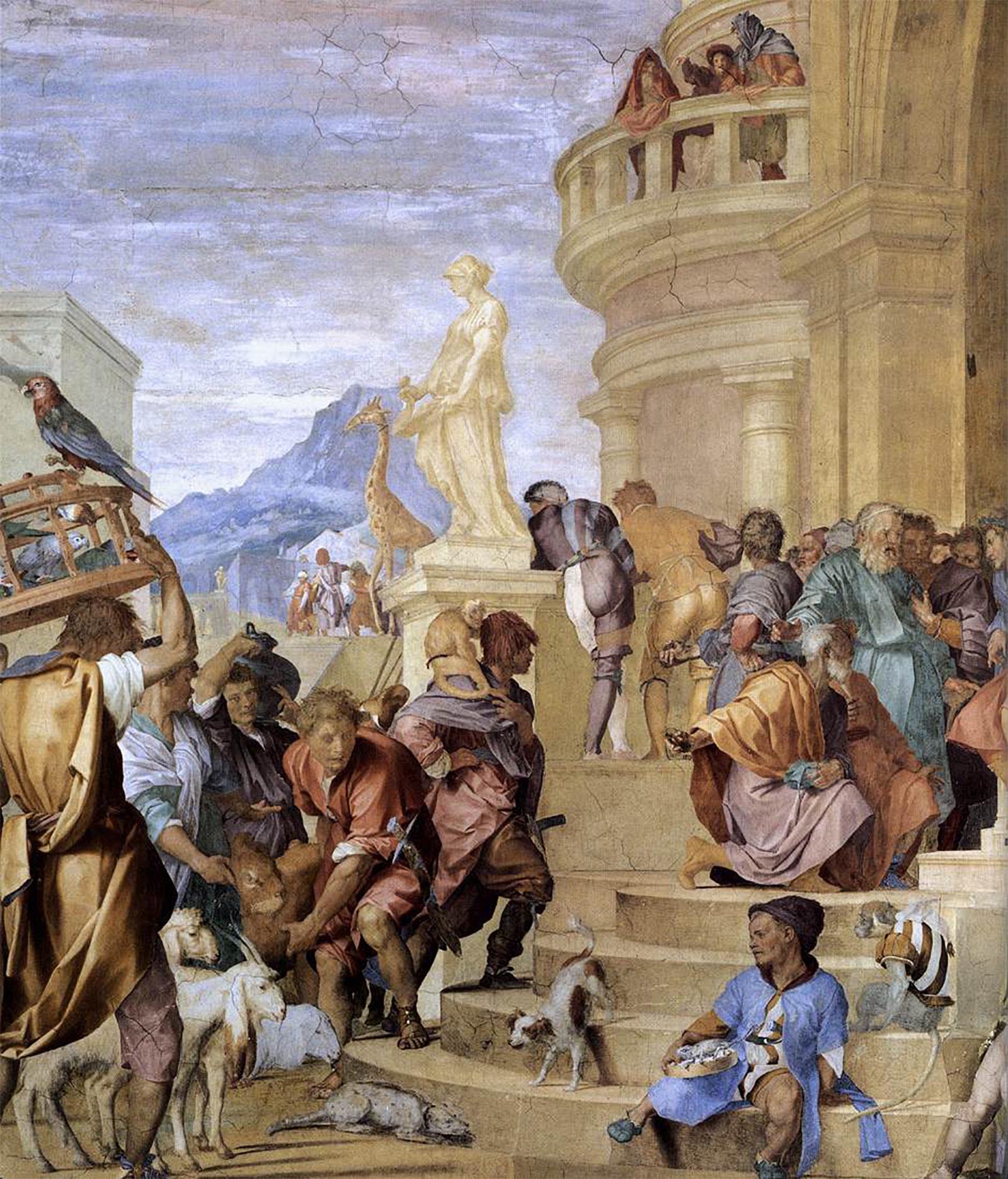
Apes and Monkeys in Roman Homes
Among the many animals cherished by the ancients, few were as curious—or as troublesome—as apes and monkeys. The custom of keeping them as pets was widespread throughout the Greek and Roman worlds, perhaps even more so than today.
As W. C. McDermott observed in The Ape in Antiquity, most pet apes in classical times were Barbary apes and Ethiopian monkeys, valued for their playful intelligence and human-like gestures. Pindar once called the ape “ever beautiful to the eyes of children,” while the orator Dinarchus, less charmed, mocked those who filled their homes with such mischievous companions.
Cicero recorded that the kings of the Molossians in Epirus kept apes as their favored pets, and Latin writers made frequent reference to them. Plautus mentioned pet apes repeatedly in Miles Gloriosus, while the Roman mime writer Laberius told of a pharmacist who absurdly fell in love with one. Martial, ever attentive to Roman amusements, even included a trained ape among the gifts in his Apophoreta.
Yet not all approved of this affection. The comic poet Eubulus complained that wealthy citizens who could afford to raise children instead chose to rear:
“a splashing goose, a sparrow, or a mischievous monkey.”
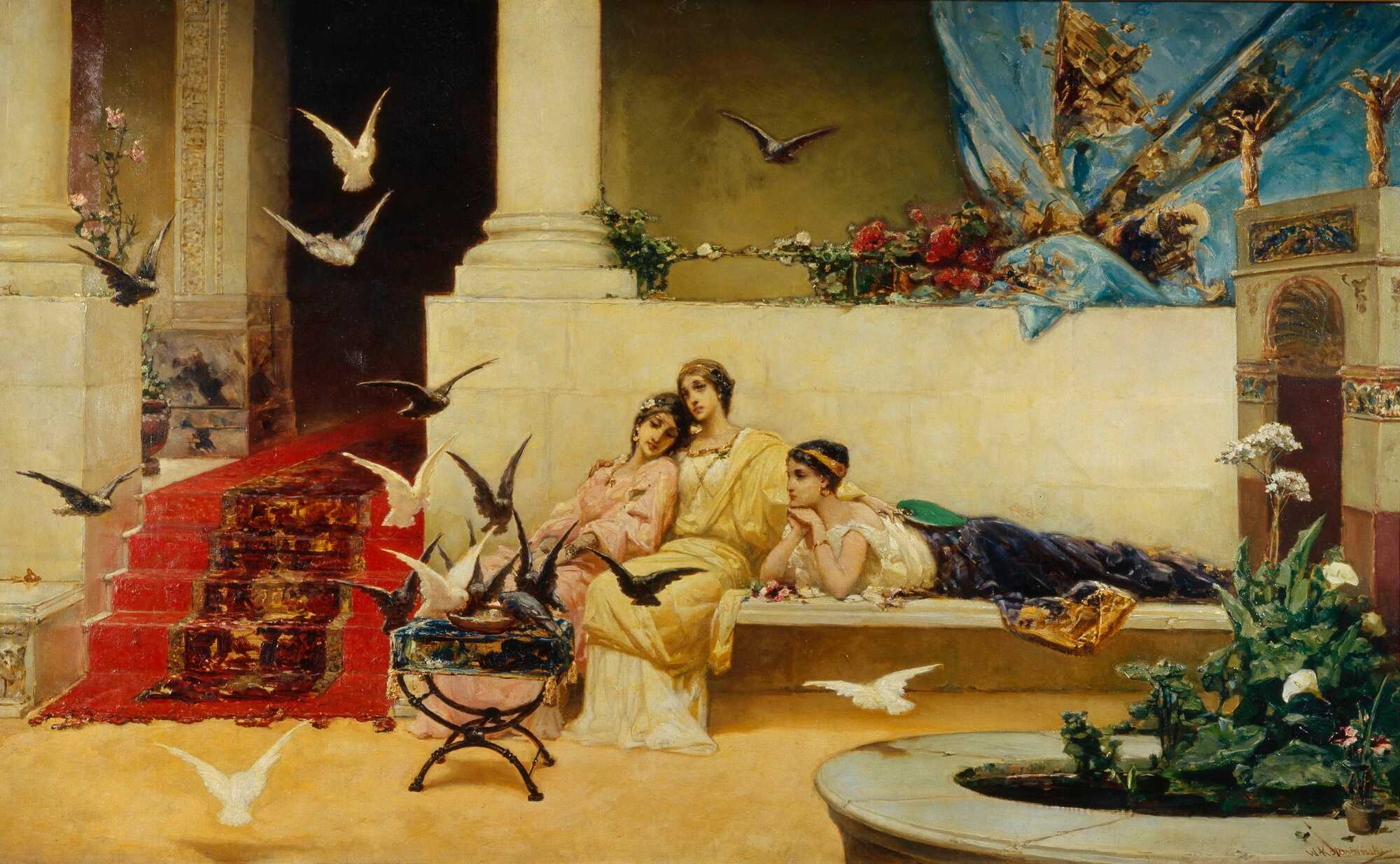
King Massinissa likewise rebuked men who competed to own such pets, asking if their wives bore them no sons. Christian moralists later echoed these criticisms—Clement of Alexandria condemned such vanity, and Saint Gregory of Nazianzus mocked a pet ape adorned with a gold collar.
Writers and artists alike delighted in portraying the ape’s antics. Aristophanes called the animal “full of troublesome tricks,” and Apuleius, describing the spring festivals of Isis, saw a monkey dressed in a straw hat and Phrygian tunic—an ancient echo of carnival jesters.
These clever animals were trained to play instruments, ride goats, throw spears, and even perform dances. Wall paintings from Pompeii depict boys forcing their pet apes to dance, while terracotta lamps show entertainers with trained apes alongside other performing animals.
The poet Luxorius describes a miniature circus where tiny Melitaean dogs pulled chariots driven by apes—a scene reminiscent of Philostratus’ paintings of a prince’s hippodrome. Galen, meanwhile, mentioned apes playing together with children, suggesting their role as lively household companions no less than dogs or birds.
Archaeological evidence complements these literary glimpses. A fifth-century Attic toy jug depicts an ape stretching out its hand toward an apple offered by a youth, capturing both curiosity and mischief. A mosaic from Carthage shows a lady shaded by a parasol while her servant holds the leash of her pet ape.
On the funerary stele of C. Julius Saecularis, a young boy is surrounded by his favorite animals—a dog, a bird, and a small ape tugging at his cloak, just as another Roman relief shows the same gesture: a tiny hand pulling at its master’s garment, half-playful, half-pleading. These scenes reveal that for all their tricks and trouble, apes were not merely curiosities of wealth but participants in daily Roman life—imitating, amusing, and sometimes unsettling their human companions.
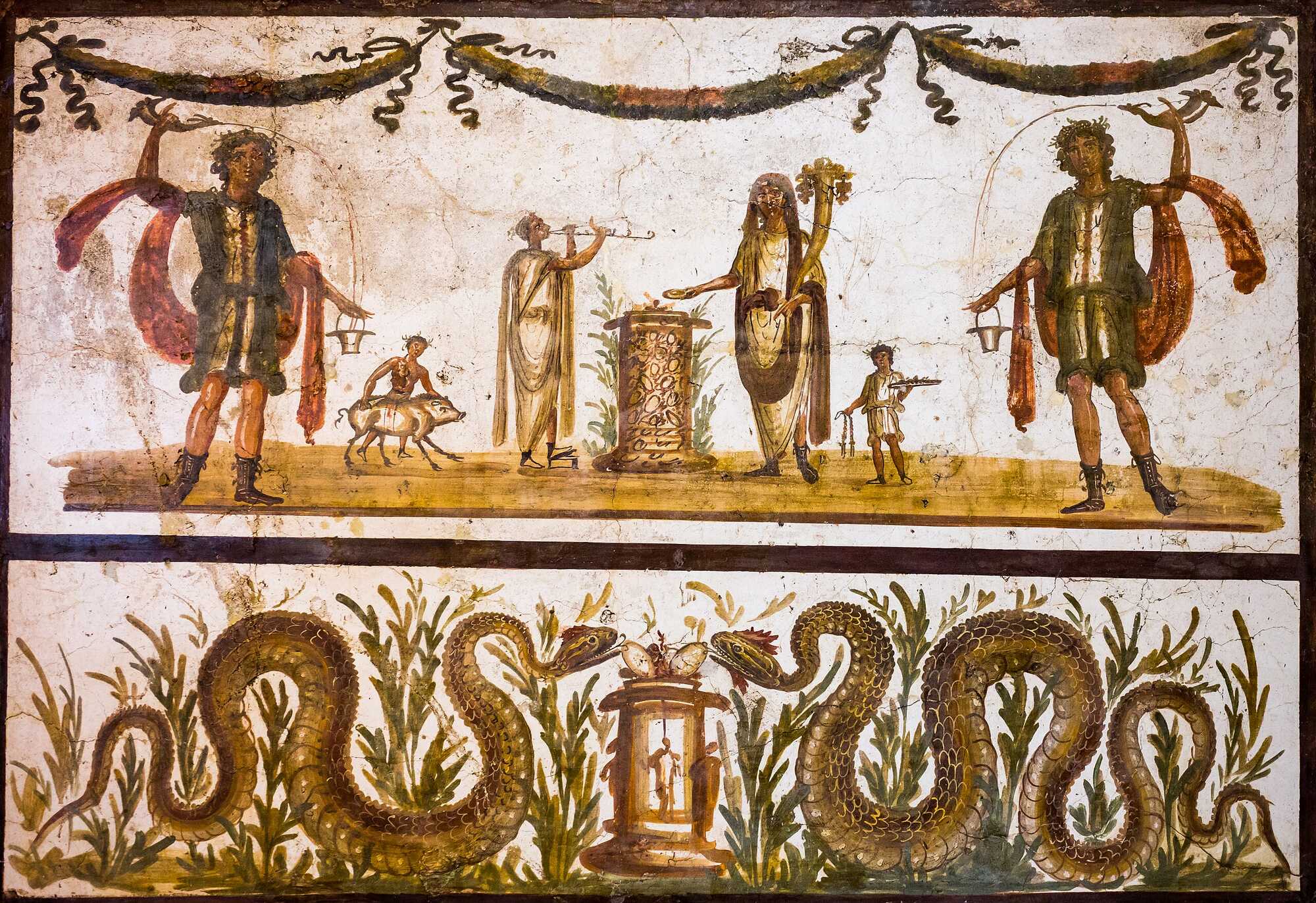
Unusual Pets of the Roman World
Snakes and birds held a special place in Roman life, bridging the realms of household affection and religious symbolism. Far from being mere curiosities, they appeared in homes, temples, and art as both companions and protectors.
Snakes were venerated as sacred beings linked to the gods, especially Aesculapius. Philostratus wrote that Ajax had a pet serpent that:
“drank with its master and followed him like a dog,”
while Lucian described tame Macedonian serpents that:
“slept with children and drank milk from women’s breasts.”
Livy records that during a plague in 290 B.C., Rome imported Aesculapian serpents from Epidaurus—believed to bring healing—to dwell on the Tiber Island. Pliny the Elder later noted that these serpents lived freely in Roman homes, guarding the storeroom (penus) like the Greek Agathos Daimon.
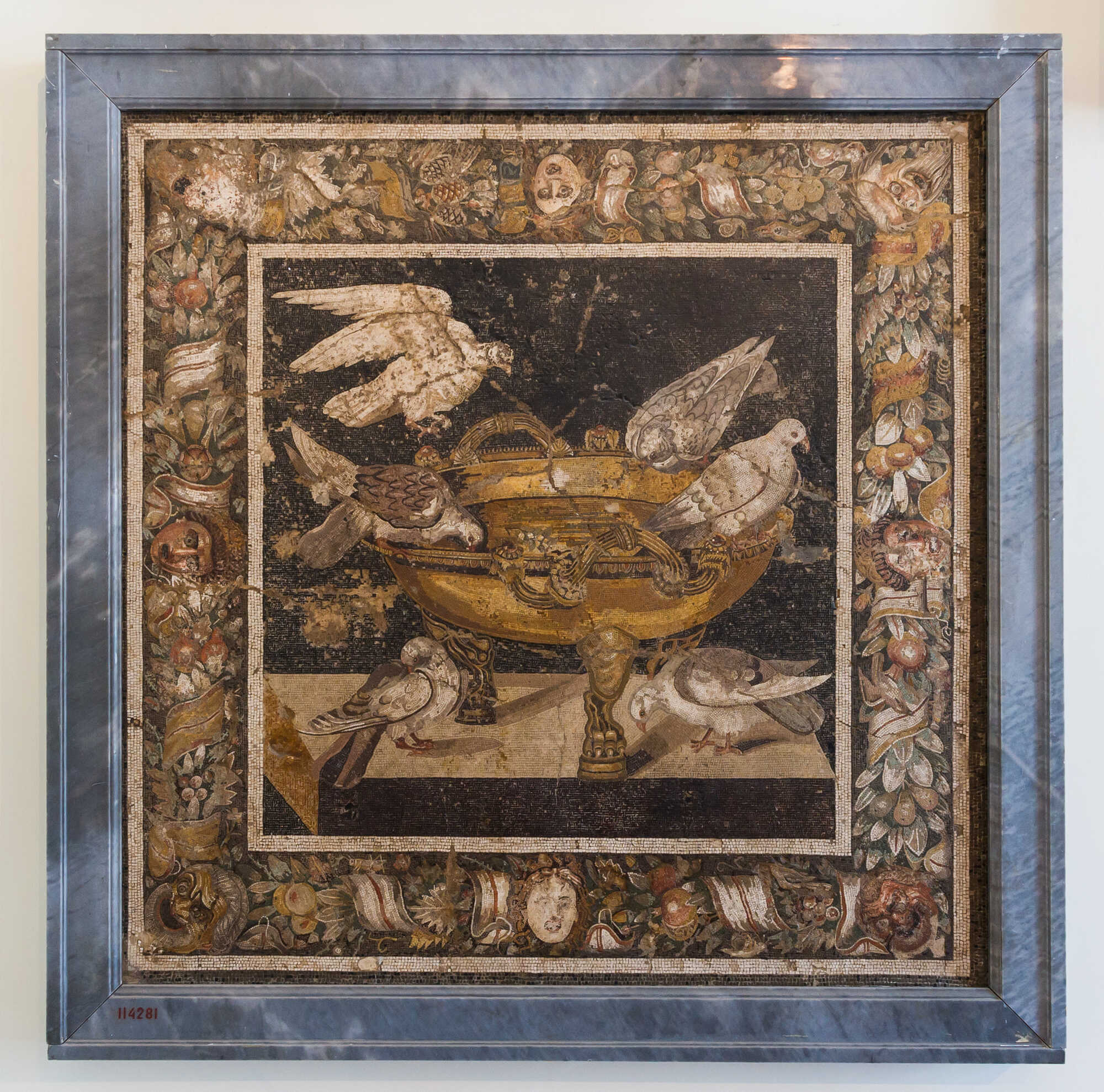
Even emperors kept serpents as omens or companions: Suetonius tells of Tiberius’s pet snake, Nero claimed to have seen one in his chamber, and Seneca mentioned snakes gliding “among cups and bosoms” at banquets. Yet unease lingered—Cicero scorned those who could “hold a viper in their bosom,” a reminder that fascination often mingled with fear.
Birds, by contrast, embodied grace and domestic joy. Scenes from Greek and Roman art show women and children with pet cranes, herons, ducks, and geese—creatures admired for beauty and temperament. Beazley suggested these birds appeared in art simply because “they were domestic pets, cherished by their owners.”
Homer’s Penelope lovingly said:
“Twenty geese I have in the house… and my heart warms with joy as I watch them.”
Funerary reliefs and terracottas capture similar tenderness: children kissing pet geese or holding quails and partridges in their arms. Philosophers and poets, from Porphyry to Fronto, recorded keeping tame birds that played, answered, and followed them like friends.
Through serpents revered as guardians and birds adored for companionship, the Romans revealed a world where even the smallest creatures shared in family life—symbols of devotion, beauty, and the divine within the everyday. (Greek and Roman Household Pets, by Francis D. Lazenby)
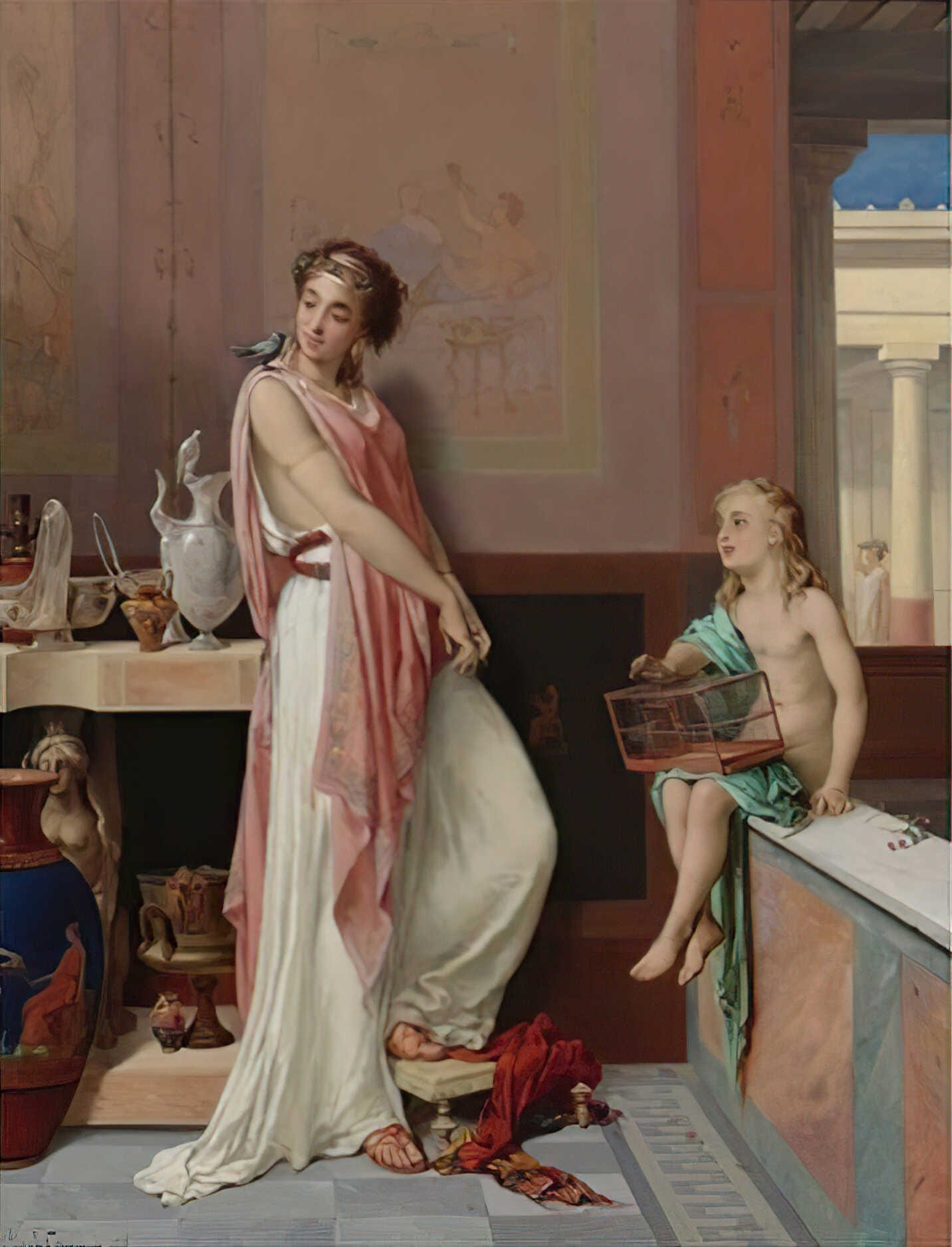
From marble stelae and literary tributes to the traces unearthed in Roman soil, the story of pets in antiquity reveals a civilization that understood companionship as part of daily life. Dogs guarded homes and hearts, birds filled courtyards with color and sound, and even snakes and monkeys found a place beside their human keepers.
Whether born of affection, superstition, or status, these bonds endured beyond life itself—etched in epitaphs, carved in stone, and immortalized in verse. Through them, we glimpse a gentler Rome, one where love was not reserved for people alone.


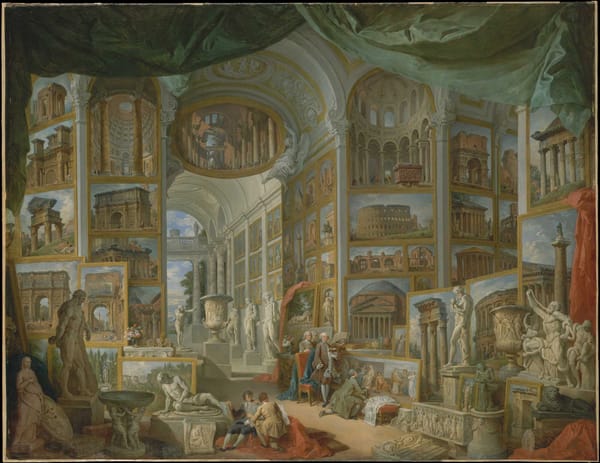


About the Roman Empire Times
See all the latest news for the Roman Empire, ancient Roman historical facts, anecdotes from Roman Times and stories from the Empire at romanempiretimes.com. Contact our newsroom to report an update or send your story, photos and videos. Follow RET on Google News, Flipboard and subscribe here to our daily email.
Follow the Roman Empire Times on social media: